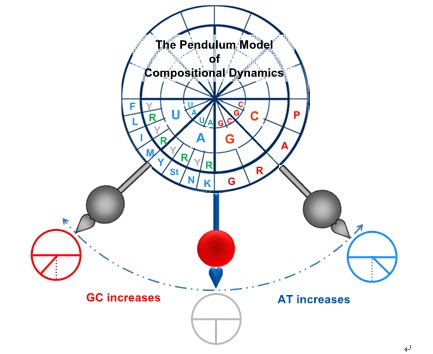A Pendulum Model to Explain Relationship Between Mutation and Selection
A pendulum model for genome compositional dynamics was demonstrated by a team led by Professor YU Jun and Professor ZHANG Zhang at Beijing Institute of Genomics (BIG), Chinese Academy of Sciences (CAS).
In the published paper (see paper link below), it described the genetic code working along two conceptual frameworks for life – the informational track and operational track. Over the last two hundred years, the informational track had been learnt, in terms of understanding rules of inheritance and evolution at molecular levels. Whereas, recently, biologists had put the hand on the operational track to discover operationally defined omics, such as ribogenomics, epigenomics, metabolite-centric metabolomics, etc.
By studying prokaryotic genomes and their basic variables, authors presented a pendulum model to explain the relationship among GC and purine contents, codon usage, and sequence variation of genes and genomes, as well as that between mutation and selection.
The genetic code was organized in such a way that the damage of extreme nucleotide variations was effectively minimized yet the potential change in amino acid sequences was also maintained for further natural selection at the population level. The larger amplitude was GC content variation representing the dominant change in nucleotide composition dynamics; the smaller amplitude was purine content that was often strongly selected when GC content went extremity; and the clock face was the genetic code linking mutation to selection. (See figure below.)
It was stated by Prof. ZHANG that “a greater majority of the changes in coding sequence can lead to amino acid changes that have potentials to alter the structure of a protein and thus to affect its function”. To fully understand the relationship between mutation and selection, we cannot only work on selective mutations and populations, but to draw a bigger, larger and broader picture.

A detailed illustration of the pendulum model (Imaged by Prof. ZHANG Zhang)
Paper link: http://dx.doi.org/10.1016/j.gpb.2012.08.002
Contact: Prof. YU Jun Email: junyu@big.ac.cn
Prof. ZHANG Zhang Email: zhangzhang@big.ac.cn